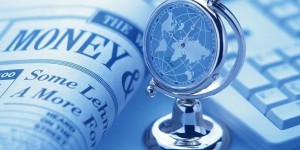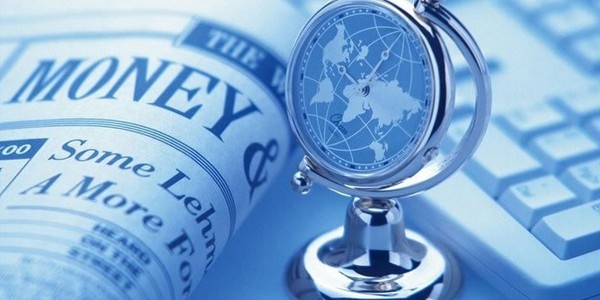Economics is considered a social science because the social science studies the organization and functioning of societies, it can be said that the Economics deals with human behavior, and studies how people and organizations in society are engaged in the production, exchange and consumption of goods and services.

This leads us to the following proposition: Why richer society is, the factors of production will always be limited to effect the production of all goods and services that society wants the same. She will have to make choices about which goods and services should be produced in the same way that men, as long as the salaries of particular value, can not naturally consume all the goods and services they want and must choose between them which can acquire and within close range of your income. Therefore, economics is one that studies the scarcity or studying the use of scarce resources in the production of alternative goods.
Scientific methods are characterized by logical reasoning and are classified as inductive or deductive.
Inductive: It is a method of reasoning that comes from particular facts to reach general conclusions.
Deductive: It is a method of reasoning that part of general premises for specific conclusions.
Usual division of the Economy:
– Microeconomics: is concerned to explain economic behavior of individual decision units represented by consumers, by businesses and owners of productive resources.
– Macroeconomics: studies the behavior of the economy as a whole. Studies determining and modifying the overall behavior of aggregate variables such as the production of goods and services, inflation and unemployment rates, the total amount of savings, total consumer spending, total investment expenditure, and total expenditure of government.
Economic system is the way society is organized to develop the economic activities of production, circulation, distribution and consumption of goods and services.
Economic flows in a market economy is a simplified version of its operation, one has to distinguish two major economic actors: the productive units or businesses and consumer units or families.
Some basics are:
Human need: It is understood by human need to feel the lack of anything attached to the desire of pleasing her. In addition, we must not forget that the biological needs of human They are new every day, requiring the company continued production of goods in order to meet them. At the same time, the prospect of rising living standard and technological developments mean that new needs appear, which demonstrates the fact that human needs are really limitless. Pair this reason we know that not all human needs can be met. And it is this fact which explains the existence of the economy, being the economist to study the way to satisfy both how much can such needs. Goods and services: in general, it can be said that good is all that can satisfy one or more human needs. Goods are classified into:
– Economic goods are relatively scarce and assume the occurrence of human effort in obtaining them. Such property have basic characteristic that they have a price.
The nature, the Economic Goods are classified into two groups: Goods and Materials Immaterial goods or services. As for the destination, the Goods Materials are classified as Consumer Goods and Capital Goods.
– Consumer goods are those directly used for the satisfaction of human needs. They may be non-durable use that disappear once used (food, cigarettes, petrol etc.) or durable use that is characterized by the fact that they can be used for a long time (furniture, appliances etc.).
– Capital Goods (or Produced Goods), in turn, are those that allow produce other goods. Examples of capital goods machinery, computers, equipment, facilities, buildings etc.
Both Consumer Goods as the capital goods are classified as finished goods, once they’ve gone through all the possible transformation processes, meaning that they are finished. In addition to the finished goods are still the Intermediate Goods, which are those that still need to be processed to achieve its final form. They are used in the production process of other products, and is also classified as capital goods. As an example we can cite the fertilizer used in the production of rice or steel, glass and rubber used in car production. Goods can still be further classified in Private and Public Goods Goods.
The Private goods are produced and owned privately. For example terms automobiles, television sets etc.
Public goods refer to the set of general goods provided by the public sector: education, justice, security, transportation, etc. Productive Resources: Productive Resources (also called production factors) are elements used in the manufacturing process of all kinds of goods which, in turn, will be used to meet needs. Productive resources can be classified into four major groups: Land, Labour, Capital and Entrepreneurship.
– Earth (or Natural Resources): is the name given by economists to describe the natural resources, or natural gifts, such as forests, mineral resources, water resources etc. It includes not only the soil used for agricultural purposes, but also the soil used in the construction of roads, houses etc.
– Work: is the name given to every human, physical or mental effort expended in the production of goods and services.
– Capital (or capital goods): it can be defined as the set of goods manufactured by man and not intended to meet the needs through consumption, but are used in the process of production of other goods. The capital includes all buildings, all types of equipment and inventory of all producers of materials, including partially or completely finished goods, and that can be used in production of goods.
– Entrepreneurship: some economists consider the “Entrepreneurship” as well as being a factor of production. This is because the entrepreneur plays key roles in the production process.
Economic agents are physical persons or legal nature that by their actions contribute to the functioning of the economic system. are they:
– Families: include all individuals and family units of the economy which, in the role of consumers acquire the most diverse types of goods and services aimed at the care of the needs of the consumer. On the other hand, households in capacity as owners of productive resources provide businesses with the various factors of production: labor, land, capital and Entrepreneurship.
– Business: are units in charge of producing or trading goods and services. Production is carried out through a combination of productive factors purchased together to families.
– Government: Includes all organizations that directly or indirectly are under state control in its federal, state and municipal levels. Often the government intervenes in the economic system acting as an entrepreneur and producing goods and services through its state-owned enterprises.
– Market: mean by market place or context in which buyers (the demand side) and sellers (the supply side) of goods, services, or features make contact and conduct transactions. For economic analysis purposes the concept of market does not necessarily imply the existence of a geographic place where transactions take place.
We finish here seizing economy, accompany future matters.
